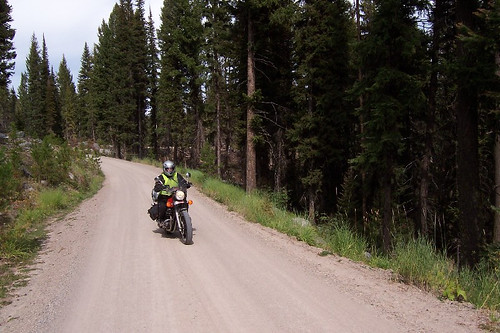 One of the many online communities I’m on had a posting by someone from a nonprofit organization looking for stock photos of volunteers to use in a brochure they were producing.
One of the many online communities I’m on had a posting by someone from a nonprofit organization looking for stock photos of volunteers to use in a brochure they were producing.
And I cringed.
Stock photos are professionally-produced photos made available for companies and organizations to use to express a certain notion or idea. Stock photos are also of people who have no affiliation with the company or organization that uses them on their web sites, in their brochures, etc. You see stock photos in picture frames for sale.
A stock photo used by a nonprofit organization on its web site, in its brochure, or on a poster is obvious — and dishonest. To me, it screams, “These are professional models who don’t actually volunteer here/aren’t actually clients here!”
Unless the identity of your volunteers or clients needs to be protected (and that certainly does happen — for instance, with domestic violence shelters), you should have a folder on your computer system (on your local network, in the cloud, whatever) filled with digital photos showing genuine volunteers, clients, staff and others, ready for use in your marketing materials and fund-raising proposals.
The good news is that you can easily compile such a stock photo archive!
Begin by ensuring that you have a signed photo release for every volunteer at your organization. Volunteers should be asked to sign such a form at the time they attend the first orientation or volunteering session or with their completed volunteer application. If you intend to take photos at an activity or event where clients will be present, you will also need to get a photo release form for any clients (or anyone else) who might be photographed. You can find samples of photo release forms by typing in this phrase into Google.com or your favorite online search tool:
photo release form
Next, make sure every paid staff member, every unpaid volunteer, every client and every parent or guardian of a client knows your organization’s policies regarding taking photos in association with your organization’s activities (again, just type photo policy into Google.com or your favorite online search tool to find examples of such), and within the boundaries of those policies, invite them to take photos in association with your organization’s activities and to share these photos with your organization. With most smart phones and other handheld tech coming with a camera, your volunteers and clients may already be taking photos. Remind everyone associated with your organization, via regular meetings or regular online or print communications, both of these policies and that you would like such photos shared with you (people need to hear messages more than once in order to have them in mind).
Note in your event or activity announcements if photos might be taken. Whoever takes photos should identify him or herself to those being photographed. This should be a part of your photography policies that you have communicated organization-wide.
When photographing at events where people may not know me, I ask that whomever kicks off the meeting to announce that I’m taking photos that could appear on our web site or in printed materials, and that if anyone does not want their photo used, they should raise their hand any time they see me taking a photo they might be a part of so that later, when going through photos later, I will delete any photo of a person who is raising their hand, or crop them out of the photo. This worked really well when I took photos at community meetings in Afghanistan (more about Taking Photos in the Developing World, a resource I developed while working in Afghanistan in 2007).
Frequently encourage volunteers, employees and clients to share photos they have taken at your events or during volunteering activities with your organization (they need to hear this message more than once!). The best way to share photos is, IMO, via Flickr (photos can be shared with just your organization, without sharing them with the entire world) or via Drop Box (don’t accept photos via email – it uses too much bandwidth and will slow your emails down!).
As photos come in to you, create a folder on your computer or drive for photos you might want to use on your web site, in a brochure, in a fundraising proposal, etc. Look for photos that have at least one of these qualities:
- shows action
- shows smiles
- shows diversity
- teens
- seniors
If you don’t have software or an operating system that allows you to organize and search photos easily, create a naming system for photos, sub-folders and files on your computer so you can easily find photos for certain kinds of images, such as photos that show:
- female participation
- senior/elder participation
- multi-cultural participation
- physical action
- enjoyment/happiness
- caring
- etc.
If you can afford to use a professional photographer and have photo setups, where volunteers pretend to be in the middle of a service activity, or where staff pretend to be engaged in their work, great! It’s okay to set up a photo — just use your own folks, not professional models.
Stay genuine! That attracts people much more than even the slickest of stock images.
March 26, 2018 update: I was working on a very large PR campaign with a colleague. I wanted to solicit photos from various sources to use in our campaign, photos of people engaged in an activity that related to our campaign. She wanted to use stock photos. I relented for various reasons. A year later, I stopped at a gas station in Kentucky, and while inside, looked up at a poster about job opportunities with this particular company. There was a series of photos that I guess were meant to represent people that work for the company. And among that series of photos was one that we had used prominently in our own campaign, which had nothing to do with gas stations… I realize it’s unlikely that anyone else made the connection, and I certainly don’t dislike gas stations – I’m quite fond of their services. But it was a reminder of why using stock photos is often a very bad idea.
March 8, 2021 update: Here is a fantastic blog about a company that created its own photo stock library, using its own assets (it’s own offices). I think going round your building with a smartphone, taking snaps and adding insta filters will always trump purchasing stock images. What a great task for volunteers to undertake for your organization!




 One of the many
One of the many